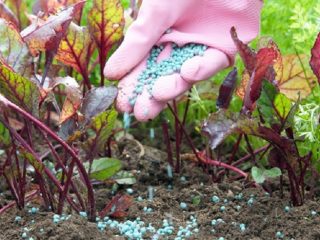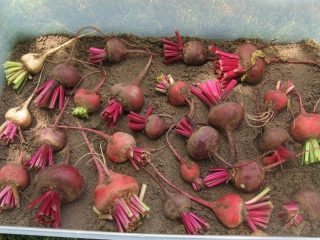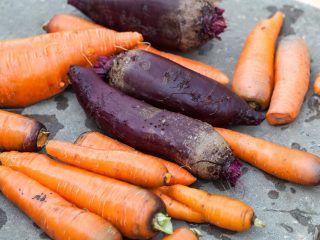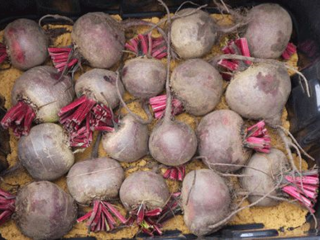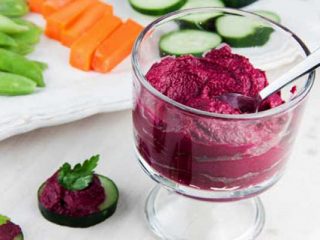Content
Pablo beets are a Russian variety of universal use. It has a good taste, attractive shape and high yield. Resistant to frost, drought and most diseases and pests.
Origin story
Pablo beets are a first-generation hybrid (designation F1), obtained in 1991. The culture passed successful tests, and in 1993 it was included in the register of breeding achievements. Approved for cultivation in all regions of Russia, including the North, North-West, Ural, Western and Eastern Siberia and the Far East. The hybrid can also be cultivated in neighboring countries - Belarus, Ukraine, Moldova.
Description of the beet variety Pablo
Pablo beet leaves are oval-shaped, green in color, the surface is slightly bubbly, with moderately wavy edges. The leaf rosette is powerful and erect. The petiole is moderately long, the color is rich pink and red.
The root crops are not too large, reaching 110–180 g in weight, less often up to 200 g.The shape of Pablo beets is round, leveled, 15 cm in diameter, and is considered exemplary. The root tail is typical - long and thin. The skin is also thin, smooth to the touch, and the color is dark burgundy. The head has a slight suberization, the rings are also not pronounced.
The pulp of Pablo beets is rich red in color, with a ruby tint. It is quite dense and at the same time juicy and tender. The taste is rich, with noticeable sweetness. In terms of chemical composition, the share of dry matter reaches 14.5%, the total sugar content is 8.7%.
Characteristics of Pablo beets
Pablo beets are a hybrid. It is resistant to adverse weather conditions, as well as to common pests and diseases. That is why the variety can be cultivated in various regions of Russia - from the middle zone and Krasnodar Territory to the Urals, Siberia and the Far East.
Ripening period and yield of Pablo beets
The variety is mid-season - root crops are formed 95–105 days after the mass appearance of the first shoots. The yield of Pablo beets reaches 6–7 kg per 1 m2 (for industrial cultivation from 240 to 320 c/ha).
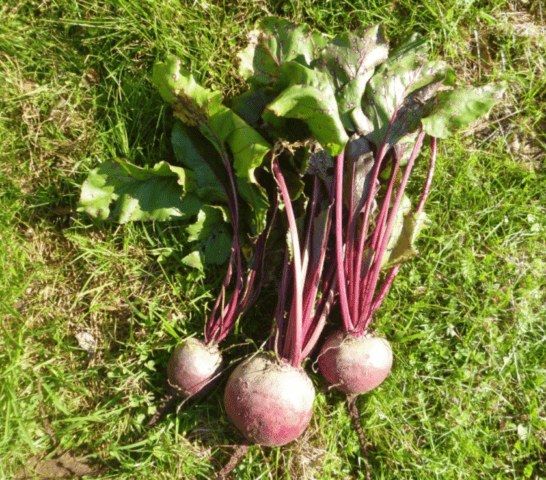
The yield of commercial beet product Pablo is 90–96%
The fruits are shelf-stable and, subject to storage conditions, retain their density and taste for 4–5 months. They are transportable and can be transported well over long distances. Therefore, Pablo beets are grown both for personal consumption and for sale, as well as for processing. Universal purpose - for use in various dishes and preparations.
Frost resistance
The Pablo hybrid tolerates short-term frosts well, although it is not frost-resistant. It is recommended to grow it in open, sunny areas.
Advantages and disadvantages
Pablo beets are valued by summer residents for their unpretentiousness and high yield. The pulp is tasty, great for preparing any dishes.
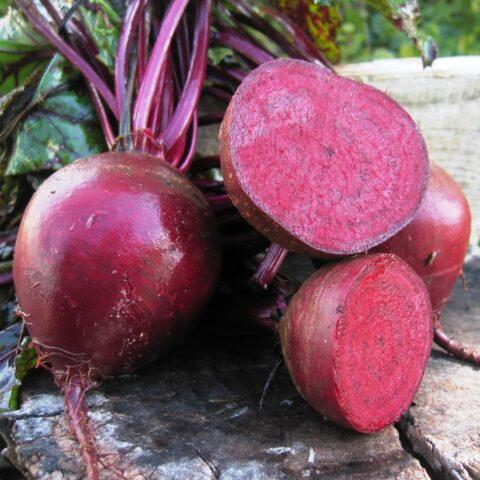
Pablo beets have a pleasant taste and visual appeal
Pros:
- high productivity;
- excellent taste;
- the pulp retains its color even after heat treatment;
- marketable condition;
- keeping quality and transportability;
- resistance to frost, drought, diseases and pests;
- undemanding to soil composition.
Minuses:
- no immunity from peronosporosis;
- tendency to early flowering and bolting.
Landing dates
The timing of planting Pablo beets depends on the method of cultivation and the climatic characteristics of the region. If planted in open ground, you need to wait until the soil warms up to 8 degrees Celsius or higher. Moreover, according to the forecast, there should be no return frosts, since some of the crops may die due to them.
Therefore, most often, summer residents choose the following dates:
- south - early April;
- middle band – end of the month;
- other regions – the first half of May.
If you plant Pablo beet seeds in a greenhouse, you can do this 7-10 days earlier. In the case of growing seedlings, they focus on the same periods, taking into account that the seedlings need to be transferred to open ground a month after germination:
- south – beginning of spring;
- middle zone – the last days of March;
- other regions – the first half of April.
If the weather is unfavorable, you can wait a few days, but no more. Otherwise, the seedlings will stretch, which will have a bad effect on the yield.
Pablo's beet planting methods
Most often, Pablo beets are grown by direct sowing in the ground, although the seedling method of cultivation is also allowed. If you plant the seeds, for example, in early April, then the first harvest can be harvested in mid-July. This is especially convenient for regions with cold springs, where recurrent frosts are possible even in May.
Seedling growing method
A week before planting, Pablo beet seeds are immersed in salted water (5%) and after a few minutes those that float are removed. Then they can be soaked in warm water until completely swollen and placed on the bottom shelf of the refrigerator for a week. Thanks to this, germination will increase.
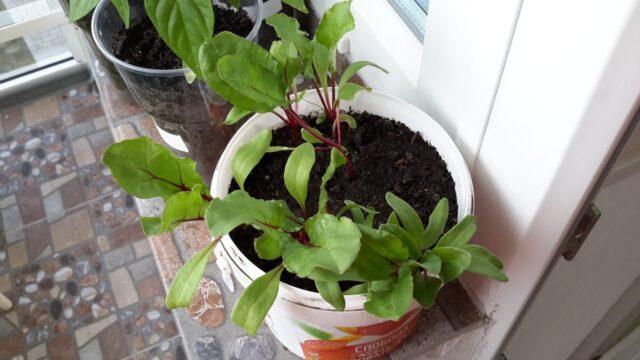
Pablo beet seedlings are grown in cool conditions
You can plant seeds either in common containers or in individual cups or peat pots. The soil can be bought in a store or made independently based on turf soil with compost or humus, peat and sand (2: 1: 1: 1).
Pablo beet seeds are planted to a depth of 1–1.5 cm with a distance of 4–5 cm, watered, covered with film or glass and grown at room temperature. After the seedlings emerge, it is better to move the containers with seedlings to a cool room (14–15 degrees). Before transplanting, the seedlings are immersed for several hours in a mixture of clay and a growth stimulant (for example, Zircon). Then they will quickly take root in the new place.
Planting in open ground
Beets are grown in an open bed, protected from stagnant water (small hill). The area is pre-cleaned, the soil is dug up and fertilized (it is enough to add a bucket of compost or humus for each square meter). Planting pattern:
- furrow depth – 10 cm;
- row spacing – 30–40 cm;
- distance between seeds – 10 cm.
At the first stage, dense planting is allowed with an interval of 6 cm, after which the seedlings need to be thinned out, leaving 10 cm between them. The soil is laid tightly so that the seed can destroy the shell.
Beet care Pablo
Pablo beets do not require special care. This is an unpretentious plant that only requires infrequent watering and 2-3 applications of fertilizer per season. Water is given twice a month so that the surface layer of soil has time to dry out. In this case, three weeks before harvesting, watering is completely stopped. If the region is arid and the crop area is large, it is advisable to use a drip irrigation system.
Fertilizers are applied several times per season:
- Before planting, apply any nitrogen fertilizer to the soil, for example, urea in the amount of 20 g per 1 m2.
- When the root crop begins to form, organic matter is added (infusion of mullein, bird droppings).
- After three weeks, add superphosphate (40 g per 1 m2) and potassium salt (20–30 g per 1 m2).
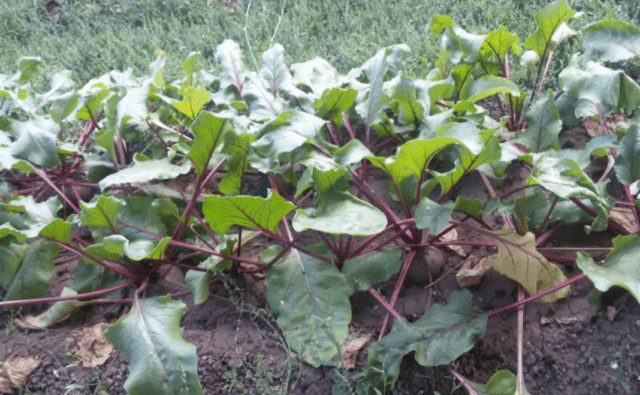
Even with minimal care, Pablo's beets produce consistently high yields
Possible diseases and pests
Pablo beets are resistant to many common diseases and pests: cercospora blight, scab, root beetle.
Like any other variety, Pablo is not protected from pests. The main preventive measure is to sprinkle the rows with ash and tobacco dust. In extreme cases, chemicals can be used. Beetroot is prone to the formation of seed shoots. The crop may suffer from leaf blight and beet weevil.
Sometimes beets are affected by fungal diseases and other infections. In most cases, this is due to improper care.The plant needs to be provided with moderate, not too frequent watering, and regular loosening of the soil. Every 3-4 years, the planting site needs to be changed, trying not to plant beets in areas where any root crops previously grew.
Conclusion
Pablo beets are a fairly popular beet variety, which is recommended by more than 90% of summer residents. Root vegetables of regular shape, with a pleasant taste, are well preserved until spring. The hybrid is resistant to bad weather and many pests. Plantings should be periodically inspected and, if necessary, treated with chemicals or folk remedies.
Reviews from gardeners about Pablo beets
